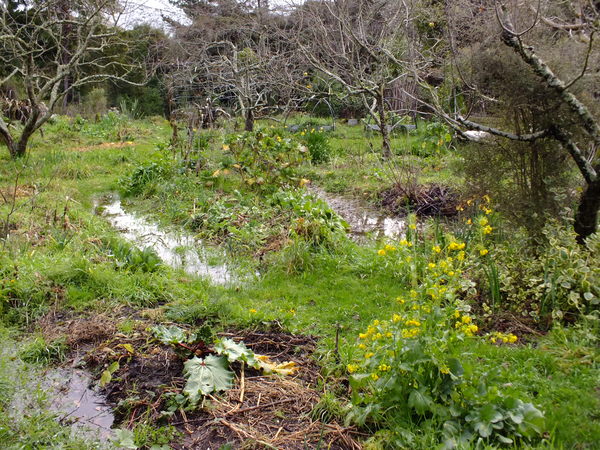Winter in the forest garden
Generally the coldest, wettest part of the year, winter in the food forest. We consider winter to be June – August and it’s not uncommon to get the worst weather in the August.
While we do get a number of frosts they are usually no harder than -5 centegrade. Being near the head of a valley as well as other local topography results in excellent cold air drainage. Additionally we have identified, developed and exploited numerous micro climates that enable us to grow a wide range of frost sensitive annuals and perennials.
Observe and monitor the changes that are now evident:
- Many trees are without their leaves, where have these naturally collected?
- Days are short and the sun low in the sky. Which areas lose the sun last and get it first?
- Where does frost form and linger?
- How do rain harvesting and water transfer features perform?
Don’t forget to consider how these observations may differ from past observations… are things improving?
Your observations and desired system outcomes determine the exact activities but certain tasks are likely:
- Chop and drop from evergreens to cycle nutrient and improve light penetration.
- Create or improve rainwater catchment and buffering systems.
- Prune and coppice trees for firewood or mushroom logs.
- Collect (or buy) scion wood from best fruit and nut trees for cloning via grafting in Spring.
- Plant or transplant hardy trees, bulbs, tubers and roots / rhizomes.
